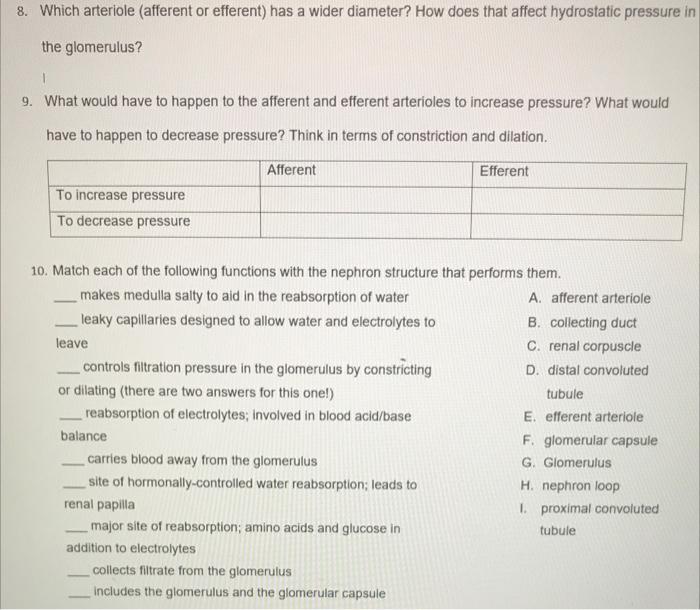Home /
Expert Answers /
Anatomy and Physiology /
8-which-arteriole-afferent-or-efferent-has-a-wider-diameter-how-does-that-affect-hydrostatic-pr-pa686
(Solved): 8. Which arteriole (afferent or efferent) has a wider diameter? How does that affect hydrostatic pr ...

8. Which arteriole (afferent or efferent) has a wider diameter? How does that affect hydrostatic pressure in the glomerulus? 9. What would have to happen to the afferent and efferent arterioles to increase pressure? What would have to happen to decrease pressure? Think in terms of constriction and dilation. To increase pressure To decrease pressure Afferent 10. Match each of the following functions with the nephron structure that performs them. makes medulla salty to aid in the reabsorption of water leaky capillaries designed to allow water and electrolytes to leave controls filtration pressure in the glomerulus by constricting or dilating (there are two answers for this one!) reabsorption of electrolytes; involved in blood acid/base balance Efferent carries blood away from the glomerulus site of hormonally-controlled water reabsorption; leads to renal papilla major site of reabsorption; amino acids and glucose in addition to electrolytes collects filtrate from the glomerulus includes the glomerulus and the glomerular capsule A. afferent arteriole B. collecting duct C. renal corpuscle D. distal convoluted tubule E. efferent arteriole F. glomerular capsule G. Glomerulus H. nephron loop I. proximal convoluted tubule
Expert Answer
8.afferent arteriole has greater diameter than efferent arteriole. This is to provide increased blo